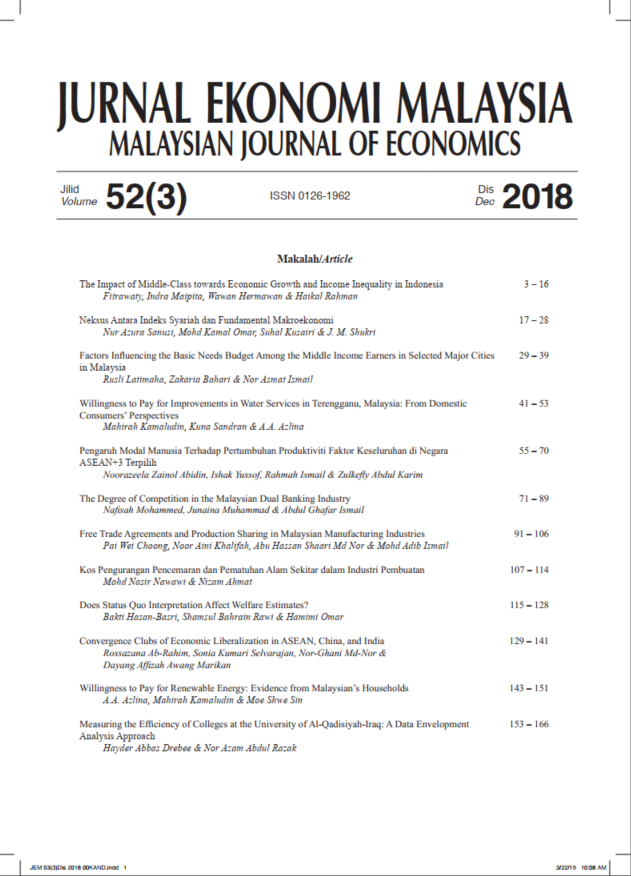Jurnal Ekonomi Malaysia
52 (3) 2018 55 – 70
Pusat Pengajian Inovasi Perniagaan dan Teknousahawan
Universiti Malaysia Perlis
Pengkalan Jaya Jln Alor Setar-Kangar
01000 Kangar Perlis
MALAYSIA
Fakulti Ekonomi dan Pengurusan
Universiti Kebangsaan Malaysia
43600 Bangi Selangor
MALAYSIA
Fakulti Ekonomi dan Pengurusan
Universiti Kebangsaan Malaysia
43600 Bangi Selangor
MALAYSIA
Fakulti Ekonomi dan Pengurusan
Universiti Kebangsaan Malaysia
43600 Bangi Selangor
MALAYSIA
Abstract
Comparative analyses between countries showed that there are differences in terms of human capital quality and its contribution to Total Factor Productivity Growth (TFP). Even though there are countries with longer average years of schooling, their human capital contribution to TFP growth is lower than countries with shorter average years of schooling. Further, it was found that a country with many skilled workers does not necessarily contribute considerably to TFP growth. Therefore, this article is aimed to analyse the impact of human capital on TFP growth with specific focus on selected ASEAN+3 countries (Malaysia, Singapore, Thailand, Indonesia, Philippines, Cambodia, Vietnam, China, South Korea, and Japan) for the period of 1981 to 2014. The analysis used dynamic heterogenous panel methods which are the Pooled Mean Group (PMG) and the Mean Group (MG) models to analyse the variables’ influence in the short and long terms. Based on the Hausman test, the PMG model proved to be better for this study as it failed to reject the null hypothesis. The results showed that the influence of human capital, average years of schooling, and ratio of skilled workers were significant and positive for long-term TFP growth under the PMG model, while in the short term, the variables were insignificant to the growth of TFP. In addition, the results of the study showed that in the long-term PMG model, other variables such as openness of the economy, government spending on Research and Development (R&D), the interaction between countries, and the average years of schooling have a significant negative relationship to TFP growth. As human capital can influence the growth of TFP, each country needs to allocate more expenditure to the education sector as human capital has a positive impact in the long run. This is especially in terms of the provision of more scholarships to students who wish to pursue higher education. Additionally, the fields of study offered should also be in line with the labour market demand. In order to produce a highly educated and skilled workforce, emphasis should be given towards a more rigorous training plan.
Keywords
Bibliography
@article{zainolabidin2018pengaruh,
title={Pengaruh Modal Manusia Terhadap Pertumbuhan Produktiviti Faktor Keseluruhan di Negara ASEAN+3 Terpilih},
author={Zainol Abidin, Noorazeela and Yussof, Ishak and Ismail, Rahmah and Abdul Karim, Zulkefly},
journal={Jurnal Ekonomi Malaysia},
volume={52},
number={3},
pages={55—70},
}
Receive updates when new articles are published.


